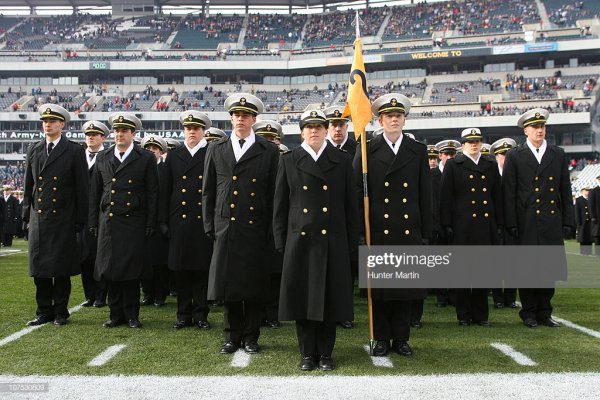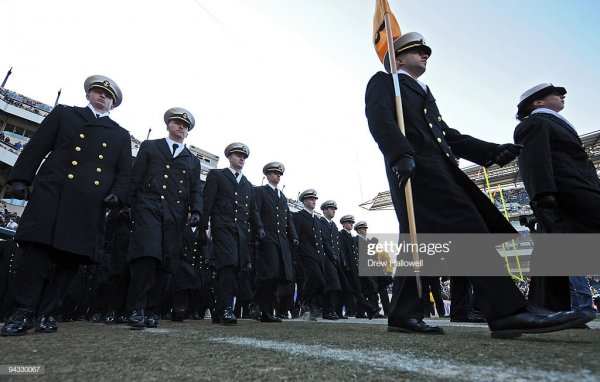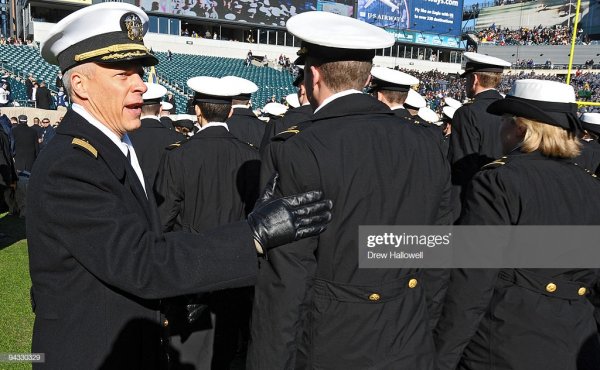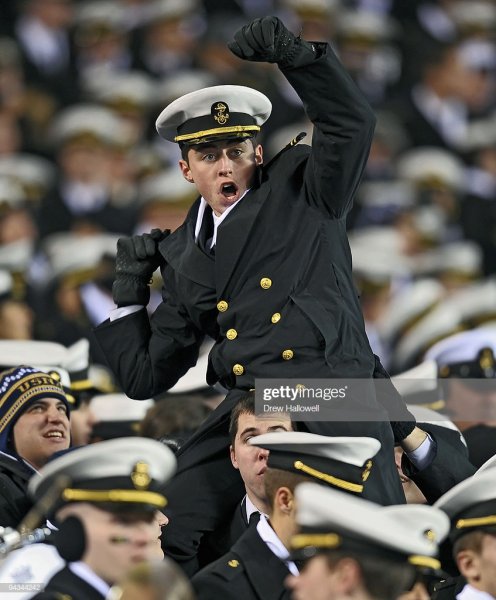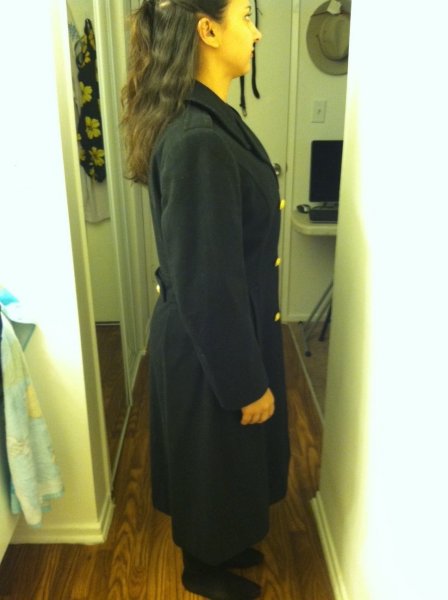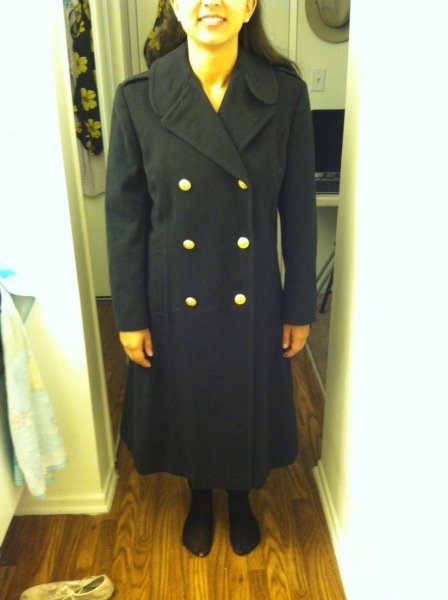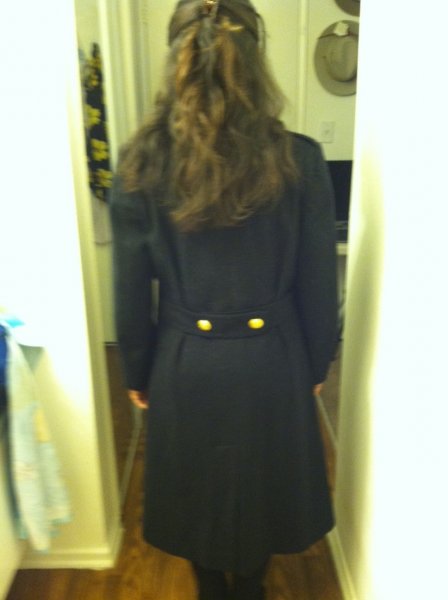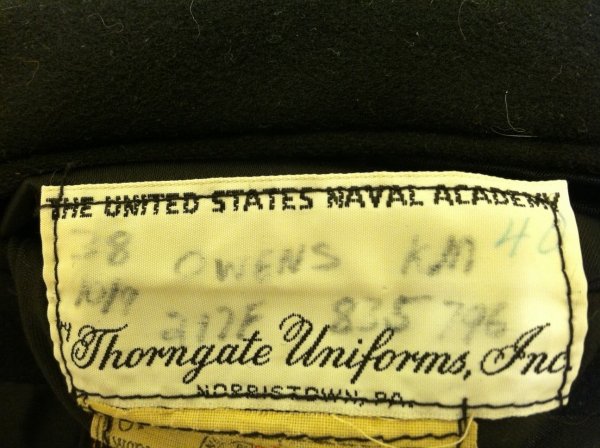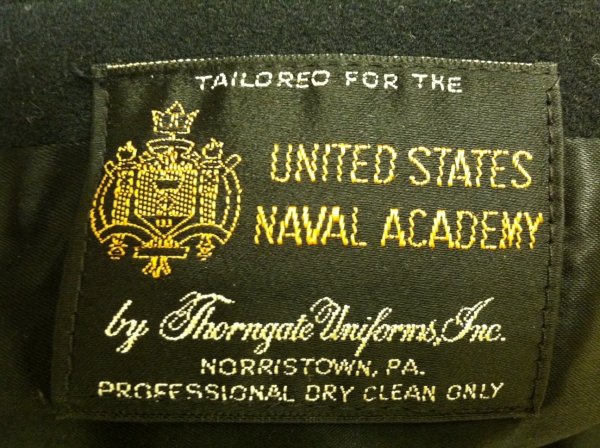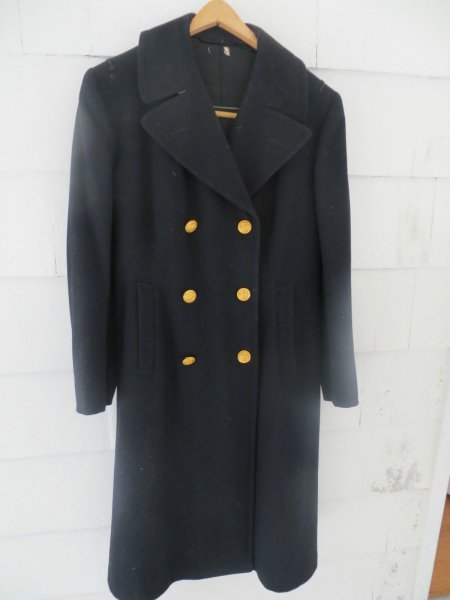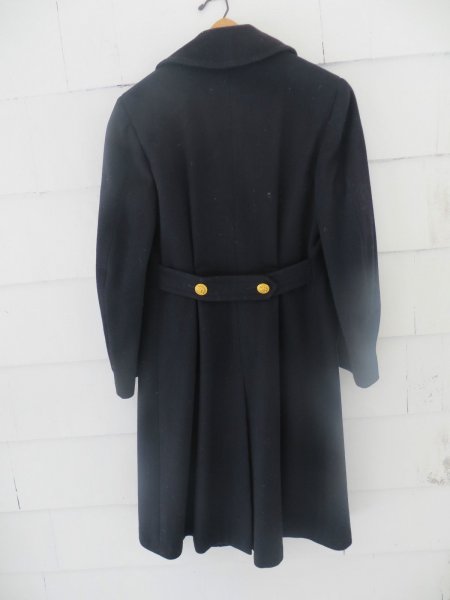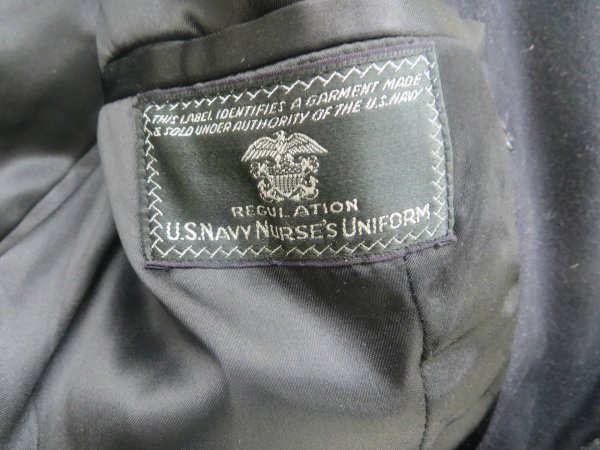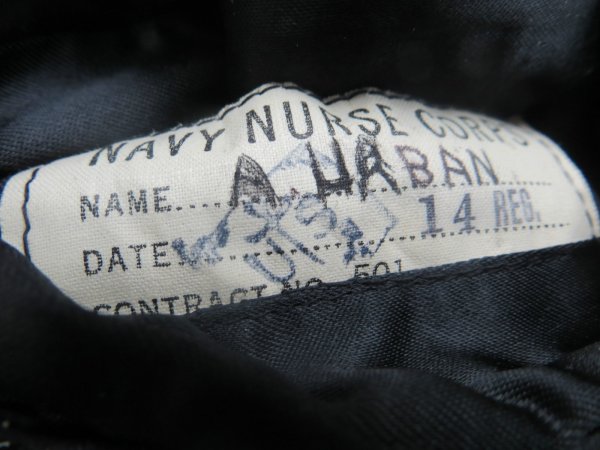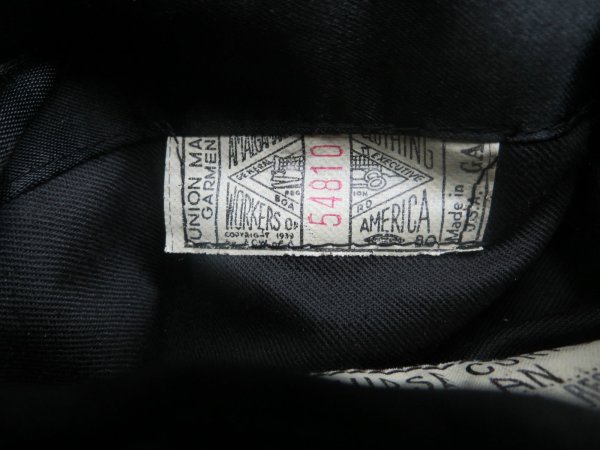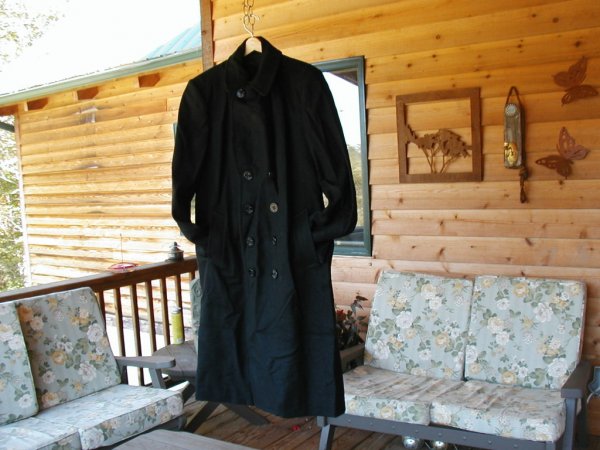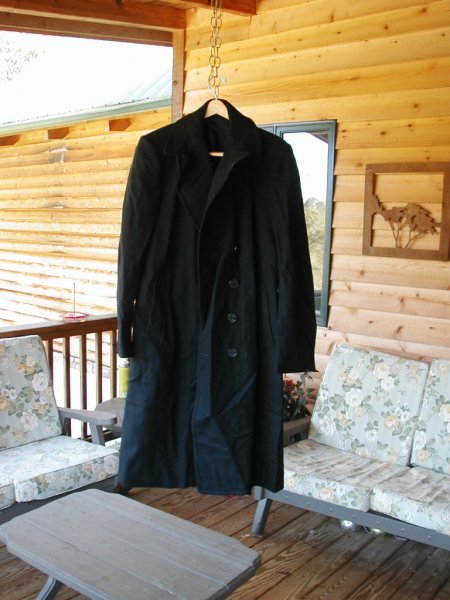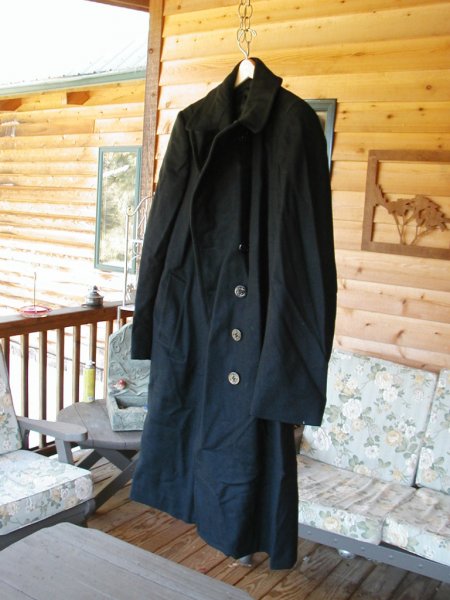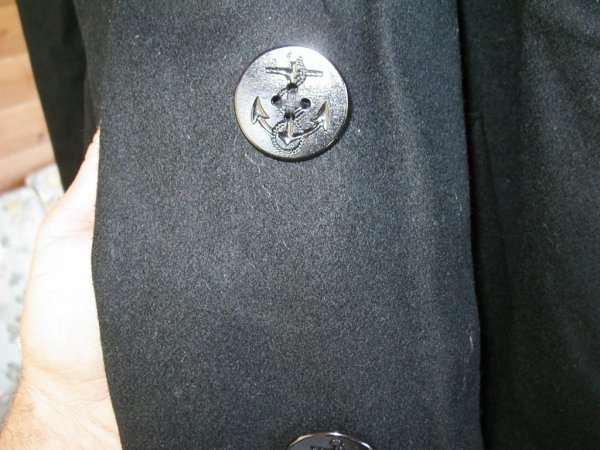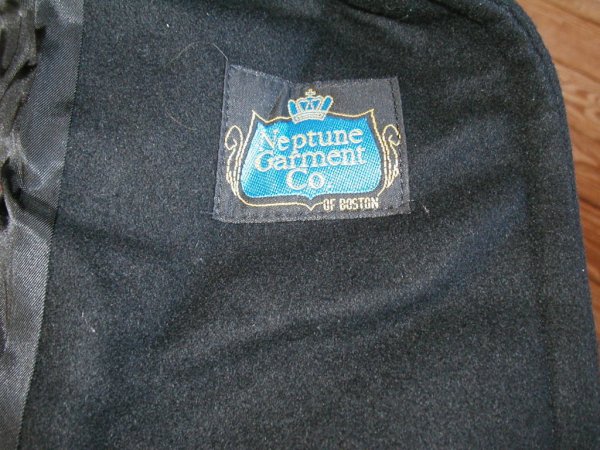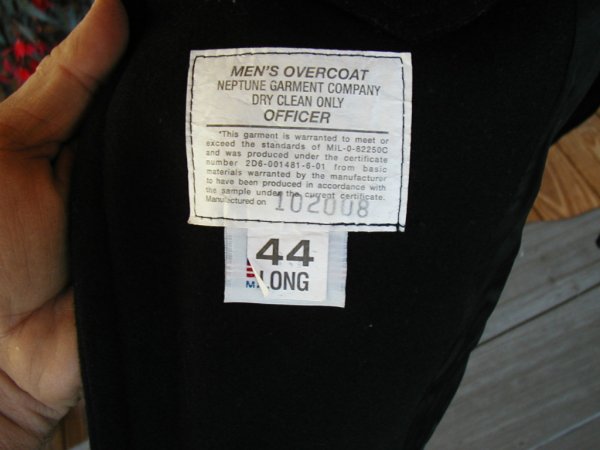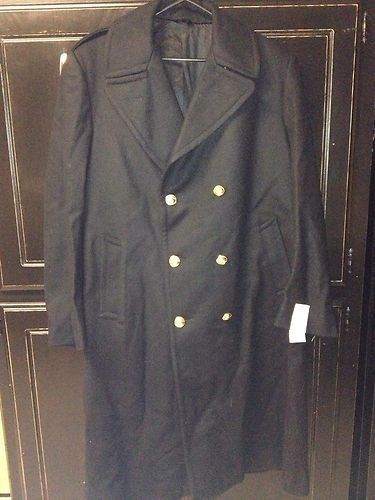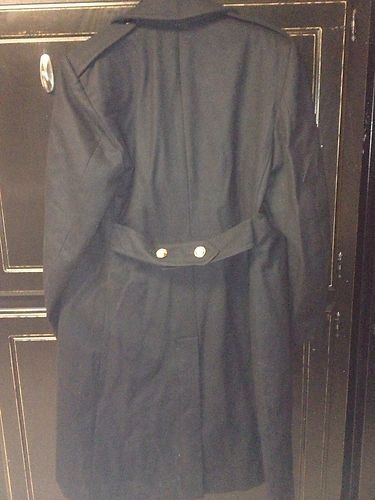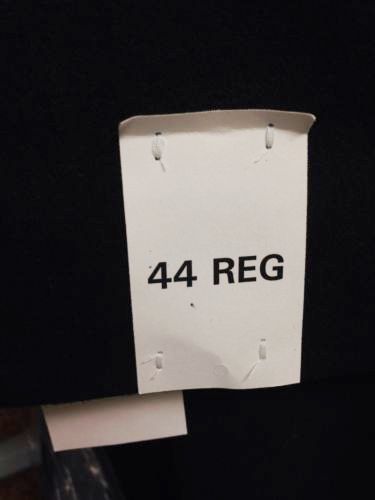Doctor Damage
I'll Lock Up
- Messages
- 4,380
- Location
- Ontario
That's a funny observation. I had to save and save and save to buy mine from the vintage store, being a kid and having no consistent income. I was rather obsessed with it and drove the store owners nuts coming to look at it all the time. I finally bought it, hung it, and maybe...maybe...wore it once on a walk down the street. The walk was just so I could wear it. The walk served no other purpose. It was both so thick/heavy and a strange garment due to length etc that I could never figure out when to wear it. My brother used it for some school pictures, which is the only time it got any real use. Granted, civilian vs actual duty use, but I can see it being a piece of clothing for very particular use; thus, not seeing much use.POST #12 WITH UPDATED PHOTO LINKS
Coat with 1 thick, 1 thin cuff stripes, presumably for a Lt. What’s interesting to me about these vintage coats is that their condition is often excellent, which I think demonstrates that many of these coats never got much use.
I have never run across a guide to the black cuff stripes for officers on bridge coats (and in the Army, greatcoats) so if someone has a guide please post a link. I think generals/admirals had a wide stripe, and other officers had thin stripes, but in what combination I personally don't know. Those sorts of stripes were for officers only and I doubt at the time chiefs were allowed to wear bridge coats (as they are allowed today).
I'd assume that the black cuff stripes would be the same as the gold for what they mean. Will need to see if I can find some old navy regulations that talk about who can wear the bridge coat. Need an old Bluejacket manual.
Here's something relevant, though:
https://www.history.navy.mil/browse...rms-and-personal-equipment/uniforms-1941.html
quote:
The captain’s overcoat is basically that of the 1922 order, which in turn was a modification of the World War I bridge coat. The 1913 outer coat had been worn completely buttoned, using black buttons. Gilt buttons were first permitted in November 1919 when the style of the overcoat was modified to bring it in closer agreement with the newly introduced double-breasted sack service coat. The first mention of an overcoat for officers appeared in the 1841 uniform instructions. In 1941, as in 1913, rank was shown on the sleeves with black braid with shoulder marks indicating both rank and corps.
This suggests that on WW2 era bridge coats the black cuff stripes showed rank the same as the epaulets and cuff stripes on service coats. That might explain why we see vintage bridge coats on e-bay and whatnot with weird combinations of cuff stripes.
Here's links to download the US Navy Uniform Regulations for 1913, 1922, and 1941:
https://archive.org/details/cu31924030896363/page/n6
https://archive.org/details/uniformregulatio00unit
https://media.defense.gov/2018/May/31/2001925044/-1/-1/0/1941-USN-UNIFORMREGS.PDF
I've got one of those Japanese vintage clothing books and it has several pages of vintage bridge coats and peacoats. The old bridge coats had peacoat buttons or something similar, and some even had handwarmer pockets like peacoats (someone posted a coat like that earlier in this thread). It's clear that for a period in the past, it would appear WW1 and inter-war, that there was a lot of crossover between bridge coats and peacoats, leading to in WW2 a distinct differentiation between the two. I believe the very oldest, most vintage bridge coats, like in those scratchy old photos I posted, the bridge coats were unique items (custom made of course) and would have had a variety of details and probably didn't match any particular garment specifications.
Nearly all jackets have that centre seam on the back. Sack is a term often used in the first half of the 20th Century in American contexts and is more related to civilian clothing and typically means coats without front scythes or 'darts' (but this Navy jacket has them, so it's not really a sack). I have no idea why they're using the word sack in relation to the jacket in the photos, other than it was a term used in the civilian clothing world at the time, and even in the clothing industry terms are used willy nilly. Frankly I don't trust the text and wouldn't give it too much weight on this point.I wonder what this "double-breasted sack service coat" is. From here, http://www.usww2uniforms.com/USN_officer_men_blue_service_coat.html It sounds like the "sack" is a design where the two halves are joined together on the back.
Here it is. It's all photos, basically no text. Worth getting in my opinion. You can find them on e-bay sometimes.Very interested in the Japanese book.
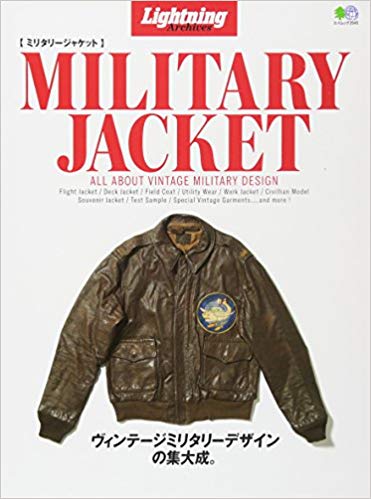
Further to this, I've flipped through those three uniform regulations and in the second half of each there are illustrations. In the 1913 regulation officers and CPOs have bridge coats ("Overcoats") which are basically the same as pea coats of the era except with larger collars and skirts that extend below the knees, including the normal peacoat buttons and handwarmer pockets above the hip pockets, and lapels that are intended to button right up to the neck. In the 1922 regulation officers have what we know as the more modern bridge coat with lapels and button placement for the lapels/revers to be permanently folded down, gold buttons, and half-belt at back with gold buttons, while CPOs have the same 1913 "long" peacoat-style coat apparently unchanged. In the 1941 regulations officers have the modern bridge coat continued from 1922, while CPO's now get the same modern coat as the officers (replacing the old-school 1913 version) but without gold buttons and without the half-belt (so basically a bastardized version of the officer's coat).Here's links to download the US Navy Uniform Regulations for 1913, 1922, and 1941:
https://archive.org/details/cu31924030896363/page/n6
https://archive.org/details/uniformregulatio00unit
https://media.defense.gov/2018/May/31/2001925044/-1/-1/0/1941-USN-UNIFORMREGS.PDF
I've got one of those Japanese vintage clothing books and it has several pages of vintage bridge coats and peacoats. The old bridge coats had peacoat buttons or something similar, and some even had handwarmer pockets like peacoats (someone posted a coat like that earlier in this thread). It's clear that for a period in the past, it would appear WW1 and inter-war, that there was a lot of crossover between bridge coats and peacoats, leading to in WW2 a distinct differentiation between the two. I believe the very oldest, most vintage bridge coats, like in those scratchy old photos I posted, the bridge coats were unique items (custom made of course) and would have had a variety of details and probably didn't match any particular garment specifications.
Here it is. It's all photos, basically no text. Worth getting in my opinion. You can find them on e-bay sometimes.
View attachment 161998
Further to this, I've flipped through those three uniform regulations and in the second half of each there are illustrations. In the 1913 regulation officers and CPOs have bridge coats ("Overcoats") which are basically the same as pea coats of the era except with larger collars and skirts that extend below the knees, including the normal peacoat buttons and handwarmer pockets above the hip pockets, and lapels that are intended to button right up to the neck. In the 1922 regulation officers have what we know as the more modern bridge coat with lapels and button placement for the lapels/revers to be permanently folded down, gold buttons, and half-belt at back with gold buttons, while CPOs have the same 1913 "long" peacoat-style coat apparently unchanged. In the 1941 regulations officers have the modern bridge coat continued from 1922, while CPO's now get the same modern coat as the officers (replacing the old-school 1913 version) but without gold buttons and without the half-belt (so basically a bastardized version of the officer's coat).
So, to summarize, USN officers have had the modern bridge coat as we know it basically unchanged since 1922, while CPO's got the modern bridge coat (minus gold buttons and minus half-belt) in 1941, and the full officer's version of the bridge coat sometime after 1941 (hopefully we can find the date when both officers and CPO's got the identical modern bridge coats).
Edit: The 1959 uniform regulations (see link below) show that CPO's had the full-detailed bridge coat (gold button) either by then or starting then.
https://ia802900.us.archive.org/20/...s1959IllustrationPlates/usnur_1959_plates.pdf
 John Lofgren Monkey Boots Shinki Horsebuttt - $1,136 The classic monkey boot silhouette in an incredibly rich Shinki russet horse leather.
John Lofgren Monkey Boots Shinki Horsebuttt - $1,136 The classic monkey boot silhouette in an incredibly rich Shinki russet horse leather.  Grant Stone Diesel Boot Dark Olive Chromexcel - $395 Goodyear welted, Horween Chromexcel, classic good looks.
Grant Stone Diesel Boot Dark Olive Chromexcel - $395 Goodyear welted, Horween Chromexcel, classic good looks.  Schott 568 Vandals Jacket - $1,250 The classic Perfecto motorcycle jacket, in a very special limited-edition Schott double rider style.
Schott 568 Vandals Jacket - $1,250 The classic Perfecto motorcycle jacket, in a very special limited-edition Schott double rider style. I can't imagine we're going to learn too much more about the dates/specs of bridge coats, since it seems we now have a pretty clear evolution, although I'd be interested in learning about the non-wool 'raincoat' version which seems to be common at the Army-Navy games in recent times. The same can't be said about peacoats, though, for which there are still a bunch of gaps in our knowledge... hopefully you will rectify that, Peacoat!Another good job, Doc. Thanks.
